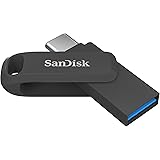As more businesses move their operations to the cloud, Amazon Web Services (AWS) has become a popular choice for many companies looking to leverage cloud computing solutions. AWS offers a range of services to support different aspects of cloud computing, including content delivery, infrastructure management, monitoring, and auditing. Among these services are AWS CloudFront, AWS CloudFormation, AWS CloudWatch, and AWS CloudTrail. While these services may seem similar, they serve different purposes and can be used together to create a comprehensive cloud infrastructure solution. In this article, we will explore the differences between AWS CloudFront, AWS CloudFormation, AWS CloudWatch, and AWS CloudTrail to help you understand which services are right for your needs.
What is AWS CloudFront?
AWS CloudFront is a content delivery network (CDN) service that helps businesses deliver their content to customers globally with low latency, high transfer speeds, and secure connections. CloudFront works by caching content, such as images, videos, and other static or dynamic files, on servers located in different parts of the world, called edge locations. When a user requests content, CloudFront automatically routes the request to the nearest edge location to reduce latency and improve performance.
In addition to caching, CloudFront also provides a range of features to help businesses manage their content delivery, including SSL/TLS encryption, custom SSL certificates, access control, and real-time usage reports. CloudFront integrates with other AWS services, such as Amazon S3, Elastic Load Balancing, and AWS Lambda, to provide a comprehensive solution for delivering content from different sources.
AWS CloudFront POPs (Points of Presence) ensure in-demand content that can be rendered quickly to the viewers. To make this happen, CloudFront depends on edge caches to improve content delivery and performance.
Amazon Cloudfront Functions in Amazon CloudFront enables you to create lightweight JavaScript functions that can manipulate the requests and responses from AWS Cloudfront.
What is AWS CloudFormation?
AWS CloudFormation is a service that allows businesses to automate the creation, management, and deployment of AWS resources in a repeatable and predictable way. CloudFormation uses templates, which are text files written in either JSON or YAML format, to describe the resources needed to run an application or service. Templates can include a wide range of AWS resources, such as EC2 instances, RDS databases, load balancers, security groups, and more.
With CloudFormation, businesses can create and manage resources as a single unit, called a stack, that can be easily updated, deleted, or replicated across multiple environments. CloudFormation also provides features such as rollback protection, stack drift detection, and resource dependency management to ensure consistency and reliability across environments.
A CloudFormation template details the intended resources and their dependencies so that they may be launched and configured as a stack. Instead of handling resources separately, you may use a template to build, edit, and remove a full stack as a single unit as often as needed.
You can code your infrastructure with CloudFormation template languages such as YAML or JSON format or start with available sample templates.
What is AWS CloudWatch?
AWS CloudWatch is a monitoring and observability service that allows businesses to collect, analyze, and visualize metrics, logs, and events from AWS resources and applications. CloudWatch provides a centralized platform for monitoring and troubleshooting the performance and health of AWS resources and applications, such as EC2 instances, RDS databases, Lambda functions, and more.
CloudWatch collects and stores data in the form of metrics, which are time-series data points that represent the behavior of AWS resources and applications over time. Metrics can be customized and monitored using alarms, which notify businesses when specific thresholds or conditions are met. CloudWatch also provides log management capabilities, allowing businesses to collect and analyze logs from different sources in a single platform.
In addition to monitoring and logging, CloudWatch provides features such as dashboards, anomaly detection, and integration with other AWS services, such as CloudTrail and AWS Lambda. CloudWatch also offers integrations with third-party tools and services, such as PagerDuty and Slack, to enable automated incident response and collaboration.
AWS CloudWatch collects and aggregates the following:
– Infrastructure and Application metrics
– Container metrics and logs
– Lambda metrics and logs
– Stream metrics
What is AWS CloudTrail ?
AWS CloudTrail is a service that allows businesses to monitor and audit their AWS accounts by providing a record of all actions taken by users, applications, and services within their account. CloudTrail captures and stores event logs, called trails, that contain details such as the time, date, and source of each event, as well as the user or service that initiated the event and the resources affected.
By providing a complete audit trail of AWS account activity, CloudTrail enables businesses to meet compliance requirements, improve security and governance, and troubleshoot operational issues. CloudTrail also provides features such as event notifications, real-time monitoring, and integration with other AWS services, such as CloudWatch and S3.
CloudTrail logs can be stored in an S3 bucket or sent to a variety of destinations, including CloudWatch Logs, Amazon Elasticsearch Service, and AWS Lambda. CloudTrail logs can also be analyzed using third-party tools and services, such as Splunk, Sumo Logic, and Datadog











